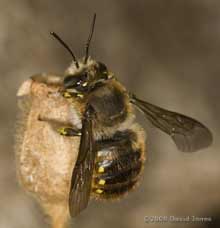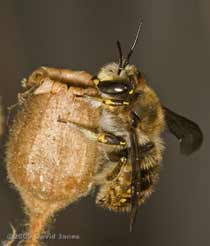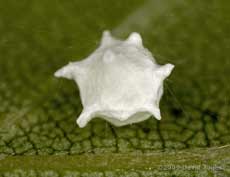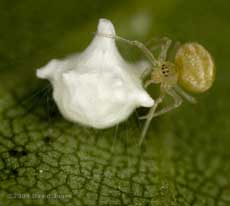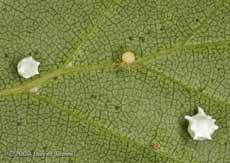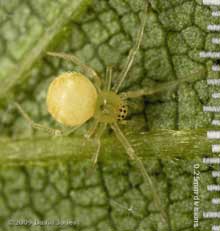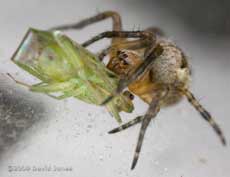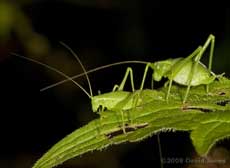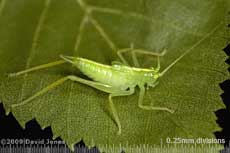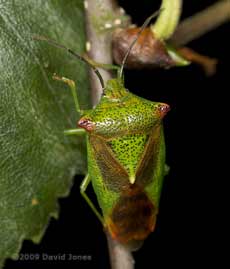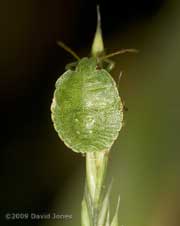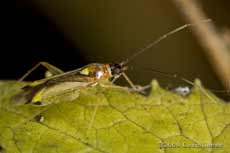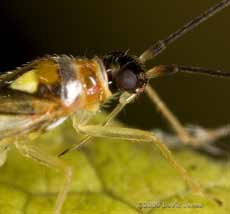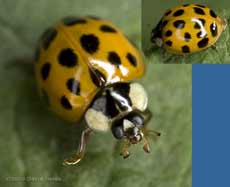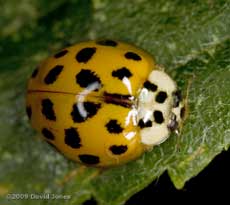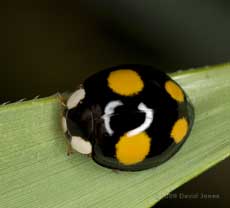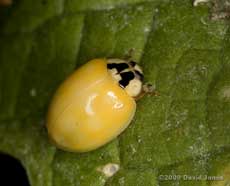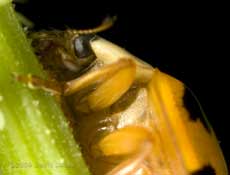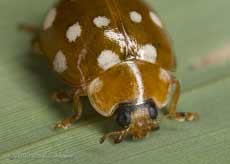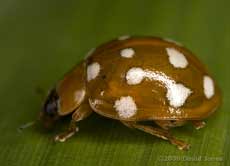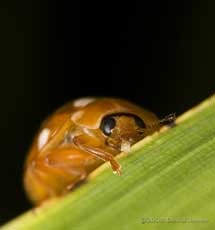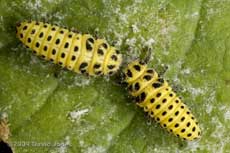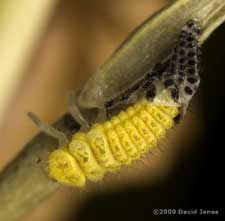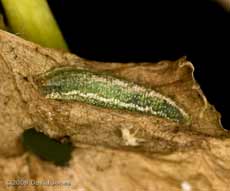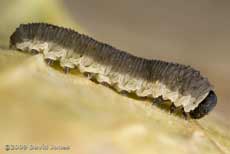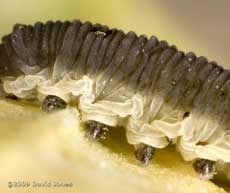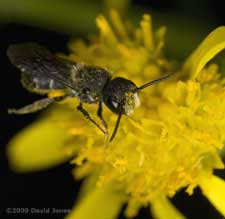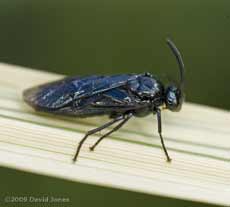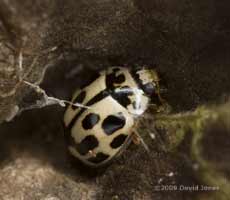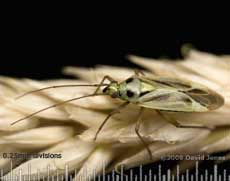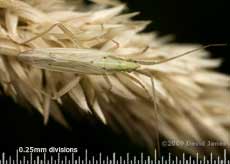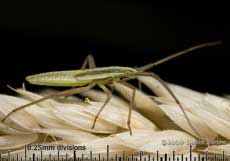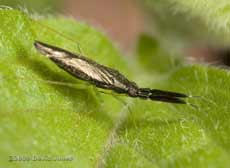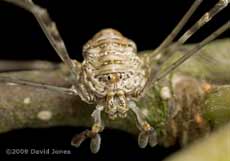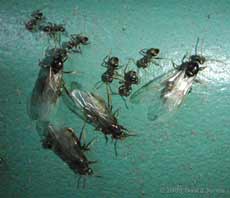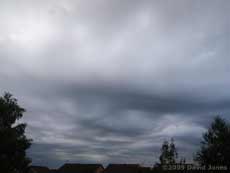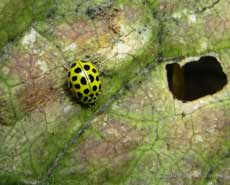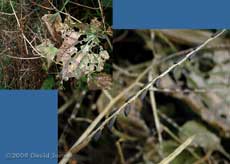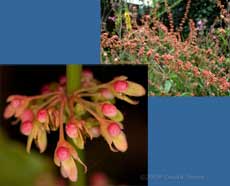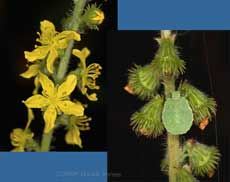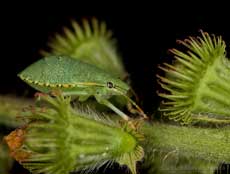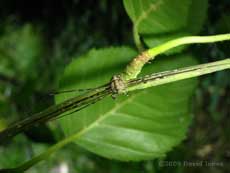Go to the last entry on this page .....Go to previous entry1 - 3 July - As another typically British short heatwave ends I am trying to get the garden diary going again - today is the first time in a while that I have really felt up to using the camera in the garden. I have done some work towards getting the holiday diary ready to upload, but it may be a couple of days yet before it appears, and I still need to sort out the very few pictures taken through the rest of June once we were home. After several days of daytime temperatures over 30C, after it not dropping below 20C last night it didn't get about 28C today. There has been quite a bit of cloud cover and there was a little bit of rain before dawn. Anyway, I haven't had time to to do what I would have wished for this entry, but here are just a few items to start the month. Yesterday I recorded a 'new' bee in the garden. I was watching activity around the Bird's-foot Trefoil (which is flourishing this year) and I noticed a bee that was behaving differently to the similarly sized Leaf-cutter Bees that are nesting in a log behind the plant. This bee was flying between flower heads in a manner that reminded me of the darting flight of a Hummingbird Hawkmoth, although it landed rather than hovered at a flower.
Those visits were extremely brief but I had a couple of opportunities to photograph it as it rested elsewhere. It appears to be a Wool Carder Bee (Anthidium manicatum). The female collects fibres from hairy plants and uses them to line her nest.
This individual is a male, and seen from another angle you can just make out one of a group of spikes at the rear of its abdomen. It patrols groups of flowers in its territory, allowing in females but and uses the spikes to defend the territory from other insects
Back on 19 June I spotted something familiar on the underside of a leaf on our Birch tree. The structure measures no more than 3mm across, including the spikes. I have come across these on the Birch in past years by have not previously been able to associate them with an animal.
However, this time there was a small spider under the same leaf, so I wondered if the two were linked. That suspicion was increased when, later in the day I found the spider actually on the structure.
Since then I have checked the leaf daily, and the spider has always been present under the leaf. Today I found that not only was the spider still there, but it had obviously produced a second cocoon overnight.
I have still to identify the spider.
While on the topic of spiders, yesterday I spotted this small spider devouring the contents of an equally small bug on an awning window at the side of our veranda. It's another spider waiting for and ID.
Every year I find a number of Speckled Bush Cricket nymphs, but usually only a couple of adults. A couple of days ago I found eight on just two Dock plants. The cricket on the right of this picture is a female - note the curved ovipositor. I'm not sure if these examples are quite fully mature yet.
4 July - A bit of dampness this morning, and a cooler start after the heat of this week, but the sun is shining again this afternoon.
The pair of long claspers at the rear of the abdomen indicate that this is a male. The short wings show that it is not yet fully mature.
On the same branch was this fresh looking Hawthorn Shield Bug.
At the moment, shield bugs seem few and far between, and the only other one I've seen over this last week was this nymph of a Green Shield Bug which I spotted yesterday.
There are plenty of small mirid bugs about, like this Campyloneura virgula,
with its piercing mouthpiece (rostrum), typical of the bugs, folded back under its body. In the past I have photographed this being used to suck the fluids out of a aphid.
12 July - The diary continues in its neglected state. Over the last week I made to decision to start stripping paintwork and walls in our hallway. Great intentions, but having got a third of the way up our stair banister I have spent the past two days watching a lot of TV and not much else! I must make some more progress during this coming week. And I have still to complete the holiday diary pages.... Anyway, since the previous entry we have no return of the high temperatures. We have had some rain, and disappointingly, one downpour washed the spider cocoons pictured above off the Birch leaf, so I cannot record what emerges. It seems that I shall have to watch out for the next one to appear in order to try again.
Last month I mentioned the large numbers of Harlequin Ladybird larvae that I was finding. Now I only find them occasionally, and I know of only a few of their pupae. This larva had only just emerged from a moult.
As for the adults, I found one today for the first time in over a week.
It's worth comparing that one with a couple that I should have put in the previous entry.
This individual has a similar spot pattern, but the 'M' pattern usually seen on the pronotum (thorax) is quite different. In fact, in this case it is hardly distinguishable.
This is also the case in this variant,
while on this newly emerged example, while the spots have yet to develop (you may just make them out on the large image), the 'M' is very clearly defined.
Notice that they all have white 'cheeks on the pronotum. The white colouring continues round to the underside of the pronotum.
The situation is little different with our native species. This is the only adult native ladybird that I've seen over the week. It's a Cream-spot Ladybird (Calvia 14-guttata). It has 14 white spots on its wing covers and pale marks in the back corners of its pronotum (thorax). The indented pronotum means that this ladybird cannot withdraw its head completely when disturbed.
Despite its latin name and the 14 spots (here you can see the spots on one side), the 14-spot Ladybird is a very different, and slightly smaller species with quite variable spot patterns.
Apart from the spots, and a dark band across the back of its head its body is all the same deep orange colour.
Back in May I commented on how successful the Garlic Mustard plants had been this Spring. Well, they have all gone to seed now, and some of the pods have already started shedding their contents, and most of the leaves have shrivelled away.
They were feeding on the mildew covering the decaying leaves.
One of the group was actually moulting when I first spotted them, but I only had time for a couple of pictures before the process was completed. Over the last week the group has dispersed (and I know that at least two have fallen foul of spiders!) and today I could only find one which looked too small to be part of the same clutch.
On other, dried up leaves of the Garlic Mustard I spotted this hoverfly larva,
and a sawfly larva
which has an incredibly wrinkled skin. This reminds me. After seeing quiet a few adult sawflies of the species Rhadinocerea micans back in May I have yet to see any of their larvae on the leaves of the Irises.
I'll try to include some plant entries tomorrow (if I'm not stripping paint!) but I will include this one now as it affects one of our resident insect species. I haven't been pointing my camera at the solitary bee hotels since coming home from Cornwall, but they are active, at least they are when the sun shines.
At the moment it is mainly the Heriades truncorum (a nationally scarce species) that I'm seeing, and this species prefers Ragworts as a food source. We have only three Ragwort plants this year, and the first has started flowering in the last two days. I may need to supplement these for next year.
13 July - A largely cloudy day with some bright spells, during which the temperature actually reached around 21C and a couple of short showers. First, a couple of follow-on observations after yesterday's entry -
I mentioned the absence of larvae of Rhadinocerea micans on the Iris leaves. I've looked again today and there is definitely no sign of characteristic damage to leaf edges as yet. However, I did see several adults about, including this one that is reflecting the blue sky.
Next, having mentioned the 14-spot Ladybird (Propylea 14-punctata) yesterday, this afternoon I spotted this one, sheltering in the curled up, decaying leaf of a Marsh Marigold. This is a 'spots free' variant with a very pale background. This species is sometimes known as the dormouse ladybird as it sleeps for more than half the year. I didn't find any Harlequins today.
And next, a trio of bugs - Each year I allow some grasses next to the big pond to go to seed, and each year they attract bugs normally found in grassland areas. Today I found two species on the seed heads. With so many species to choose from I cannot be certain of their species.
The first is this one, which matches quite closely the photograph of Stenotus binotatus in one of my insect guides.
The second species is a much more slender insect which I have so far been unable to match with the illustrations in my guides. It is probably Stenodema laevigatum, and it is actually in my guides - thanks to Philippe Moniotte for reminding me.
Also present were a couple of what I think are nymphs of the same species.
This is probably Heterotoma planicornis, a bug abundant in southern Britain.
And finally today, looking eye to eye with a Harvestman! I have yet to try and identify the species.
And how did the redecorating go? It didn't. I had hoped that by doing just a couple of hours each day I could avoid the repercussions, but I should have known better - the damned CFS has won again and we are going to be calling in the professionals .... At least it should mean that I may stay awake enough to get the holiday diary finished and uploaded soon, and perhaps get this diary back to normal.
16 July - Just one entry today - After a bright day with quite high cloud, this evening the cloud base dropped.
Early in the evening I took some kitchen scraps down to out composting bin and on the outside of it were the first flying ants that I've seen this year.
These mating flights ( the large, winged ants are queens) often take place when it is warm and humid, leading to a long standing belief by some people that ants can foretell a thunderstorm. Well, as if to remind me of this, by 7.30pm this evening threatening clouds were rolling in from the south-west and I heard the first of several rolls of thunder at around 8pm!
21 July - Another grey, and damp day. After the heatwave that brought June to an end, this month is turning into a real disappointment, and other than bird activity and the plants growing quite lush there hasn't been a huge amount of activity in the garden. On the bird front, which has been neglected in the diary, but not ignored, activity has been centred around young birds. There are several juvenile Great Tits here every day. While I can't really claim them it is tempting to call them 'ours'. Blue Tits seem to have had a good nesting season this year. We have up to ten in the garden at a time, which is unusually high for us. There are juvenile Goldfinches here too, although I haven't seen so many this year. Often throughout the day was can hear Goldfinch adults singing from either the tree tops or, it seems more often, tv antennae. Up until a few days ago a male Blackbird was regularly taking food away, and last weekend I caught a glimpse of a fledgling at the bottom of the garden. A young Robin that has been a regular visitor to the bird table for the last few weeks has started to develop the characteristic red breast. There are several young Starlings that spend a great deal of time sharing the Hawthorn with the House Sparrows, and one of them is starting to show bits of the adult speckled plumage. The House Sparrows still seem to have at least a couple of youngsters still in their nest boxes. The cool weather this month hasn't been kind to the insects, and there has been little new seen to report on. And there have been no more flying ants!
On the Garlic Mustard plants I can still see the occasional 22-spot Ladybird larva, but today I also found this adult feeding on mildew. This is the only ladybird I've seen since the entry of the 13th, and that includes any stage of the Harlequin Ladybird, although I guess that situation will change when the sun come out for a few days.
I guess that most gardeners would have cleared the patch by now, and perhaps have lost some ladybirds in the process!
I read that the Sorrel, which is wind-pollinated is one of the most prolific producers of pollen amongst the British flora. It also contains a lot of vitamin C, although it also contains oxalates which are far from good for your health and so is best avoided!
Hopefully the number of seeds being produced will ensure that the single plant will be supplemented next year. Notice how the ring of hooks that help in the distribution of the seeds are already in place before a flower opens (top of left image).
The Green Shield Bug nymph represents the only shield bug seen since I reported on a similar nymph over two weeks ago.
Today I managed to 'sneak up' on one and get this picture to show one in a resting pose, camouflaging itself by orientating its legs along the branch, with its body positioned by the base of a branch.
The forecast offers the prospect of some better weather as we head for the next weekend, perhaps encouraging more insect activity - I'm sure that the Swifts would appreciate that!
Click on images to see larger versions |
|
